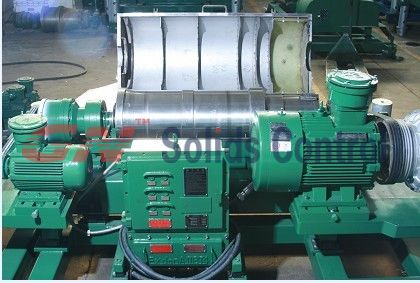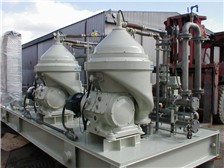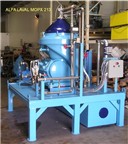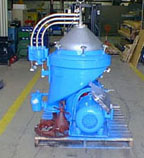By Keith Yost
On September 25, at the Group of 20 summit in Pittsburgh, President Obama revealed to the world that Iran has been covertly constructing an uranium enrichment facility outside the holy city of Qom. Flanked by his allies Gordon Brown and Nicolas Sarkozy, Obama demanded that Iran disclose the entirety of its nuclear activities “or be held accountable.”
As a diplomatic play it fell short. France and Britain, though in agreement with the president over the need to pressure Iran, were critical of the move — they had wanted Obama to deliver the ultimatum in the much more dramatic venue of the U.N. Security Council, where the president had spoken just days earlier. China, who wields veto power over any U.N. sanctions, was un-swayed by the revelation and continues to oppose substantial action.
And Iran, as is seemingly its custom when asked to respond to anything a Westerner has said, took great umbrage and dismissed the U.S. intelligence coup as half lies and half misconceptions. Among the key actors the United States hoped to woo, only Russia seemed to have been stirred to action by the news, and this new-found support for getting tough with Iran came only after months of U.S. concessions and kowtowing.
More to the point, the outrage over the Qom facility is misplaced, or at very least mis-prioritized. As an indication of Iran’s ill intentions, Qom adds to a large and growing body of evidence. But as a component of the Islamic Republic’s weapons program, Qom amounts to very little.
The most recent International Atomic Energy Agency (IAEA) report on Iran’s nuclear activities (issued August 28, 2009) places things in the proper context. As of July 31, Iran has stockpiled 1,508 kilograms of 3.5 percent enriched uranium hexafluoride (UF6). It has 4,592 centrifuges in operation, with an additional 3,716 installed and being brought online. It has tested long-range solid fuel missiles, experimented with the explosives needed to create implosion-type nuclear weapons, and refused to grant IAEA inspectors access to critical facilities. In my personal judgment, Iran’s stockpiles, facilities, and technical sophistication are sufficient to produce a nuclear weapon within three to five months.
Let me explain the math behind this assessment, starting with the fissile material required to produce a nuclear weapon.
A nuclear weapon requires a critical mass of fissile material in order to achieve detonation. Using a bare sphere of 90 percent enriched uranium metal (the 90 percent indicates the fraction of U-235, a fissile isotope of uranium), a critical mass is just a tad less than 54kg. In practice, nuclear weapons are constructed with a neutron-reflecting tamper that reduces the amount of fissile material necessary for a critical mass. Depending on the material of the tamper’s construction (U-238 and beryllium being two common choices) and the sophistication of design, the amount of uranium needed to achieve a critical mass can thus be reduced to 15-21kg.
To our knowledge, Iran does not currently possess any uranium with the concentration of U-235 necessary to fuel a bomb. The IAEA limits Iran to uranium with a 5 percent concentration of U-235, and Iran’s existing stockpiles are in the area of 3.5 percent. To take this 3.5 percent material and convert it to weapons grade, further enrichment is required.
Iran’s enrichment capabilities are not impressive from a technical perspective. Enrichment capacity is typically measured in SWU, or “Separative Work Units.” SWU are a complex measurement of the ability to perform isotopic enrichment. In a given year, a best-in-class centrifuge can provide hundreds of SWU. A Pakistani centrifuge may produce 5–7 SWU per year. An Iranian centrifuge is designed to provide roughly 2 SWU per year, and in practice provides only about half a SWU due to poor operation, according to IAEA observations.
However, what Iran may lack in technical prowess it has made up for in sheer numbers. Half a SWU is not a lot, but many hands make light work. Converting its stockpile of 3.5 percent enriched uranium into 15 to 21 kilograms of 90 percent enriched uranium would require roughly 80–130 days of separative work using just the 4,592 centrifuges currently in operation. It would take additional time to reconfigure the centrifuges (centrifuges are organized into series called “cascades” and a cascade that is optimized to enrich natural uranium to 3.5 percent is not optimized to enrich 3.5 percent to 90 percent), as well as to convert the uranium hexafluoride into uranium metal, but these delays would not be significant — Iran could come very close to optimal performance just by reconfiguring two or three cascades and making minor modifications to the rest.
In the time it will take Iran to complete its Qom facility (six months we’re told), it will already be dangerously close to a nuclear weapon. If given half a year to bring the remainder of its installed centrifuges online and continue adding to its low-enriched stockpile, Iran will be 1-2 months away from a nuclear device (the uncertainty primarily due to whether or not it continues enriching to 3.5 percent or if it continues up to the 5 percent IAEA limit). No improvement in operating capabilities, no new centrifuges, and no secret facilities are needed — if Iran merely continues down the road it is on, by April of next year it will be able to produce a bomb faster than diplomats can react.
There is a false sense of security in thinking that so long as the IAEA can visit all of Iran’s enrichment facilities, that we can prevent Iran from going nuclear. It’s true, in a sense, after all. We could, if we wanted to, respond to a removal of inspectors by promptly bombing Iran’s facilities, and thus deny them the ability to use declared facilities to develop nuclear weapons. What makes this sense of security false is that it is unlikely we would actually respond this way. Suppose that tomorrow Iran tells the IAEA to pack up and leave. What do you imagine our response to be? Unless the American public has been prepared and the diplomatic table has been set, retaliatory strikes are just not in the cards — it’s more likely we’ll see something similar to North Korea, where sanctions and talking are the order of the day.
This is what makes a pre-occupation with the Qom facility so dangerous. Iran could give the U.S. everything it demands, up to and including scrapping the facility entirely, and at the end of the day it would still have a nuclear program that goes beyond what the U.S. is willing to tolerate.
On Iran, Obama has much more room to maneuver than his predecessor. He’s better liked abroad, has more political capital at home, and Iran’s recent unrest makes them vulnerable. He has the opportunity to build a credible deterrent to Iranian proliferation by organizing sanctions against Iran’s nuclear status quo and by preparing military responses to potential escalations of Iran’s misconduct. But in order to take advantage of this opportunity, Obama must not let the narrative of Iran’s program revolve around the Qom facility alone. Proliferation will not be stopped merely through a reactionary preservation of the status quo — unless a real reversal is achieved, and soon, the mullahs will have their bomb.
source: tech.mit.edu












